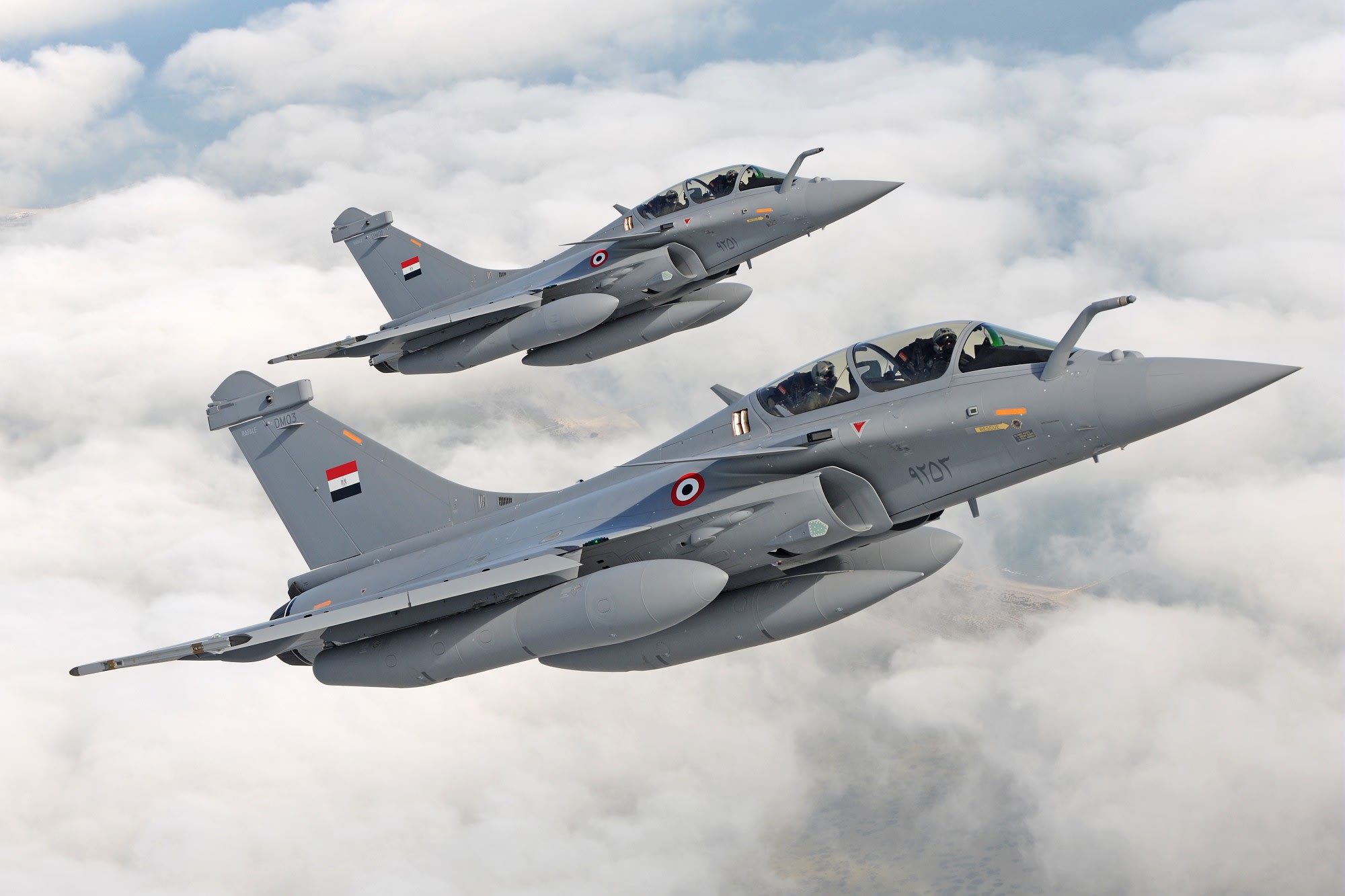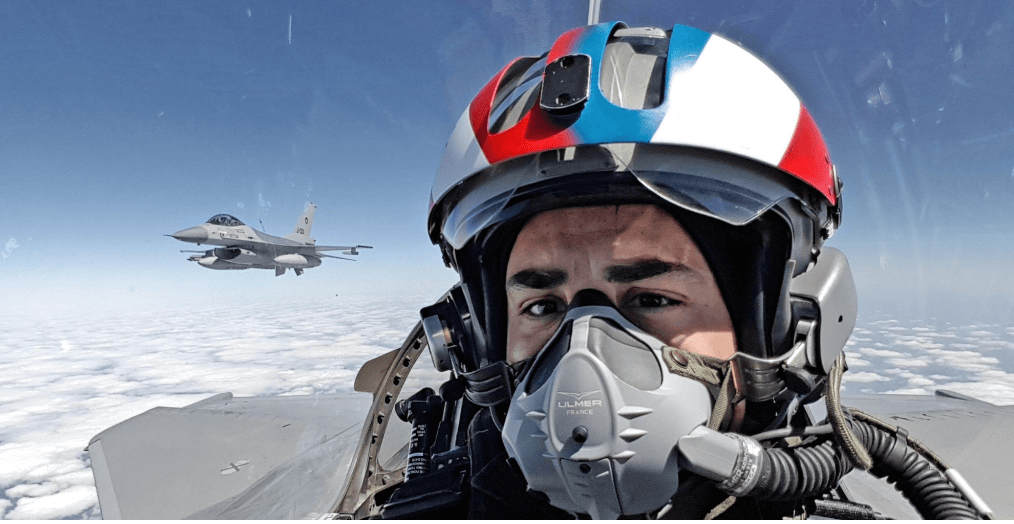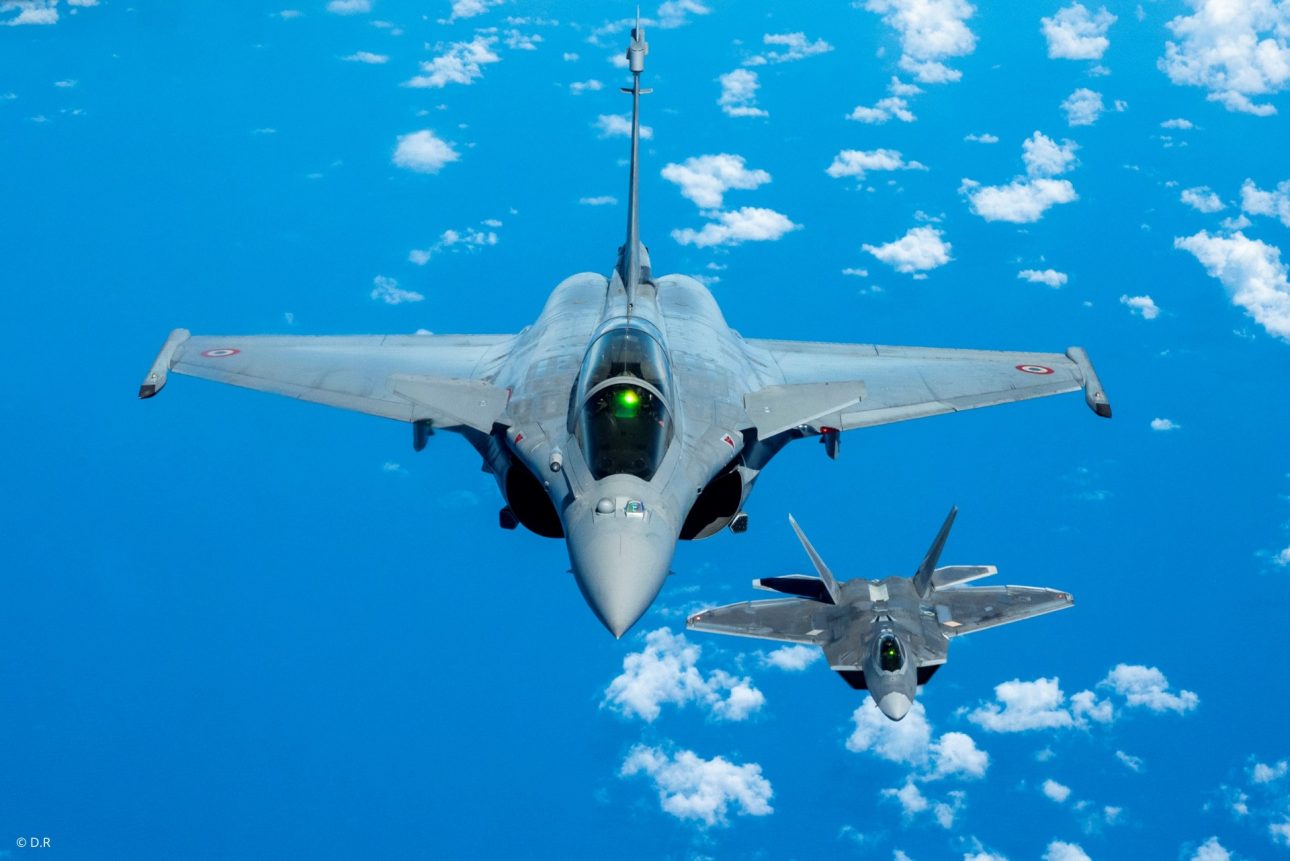Rafale fighter jet, the pride of the French defense sector, has experienced many ups and downs throughout its journey, going from being dubbed a “cursed aircraft” to witnessing skyrocketing export sales in recent years.
Today, the Dassault Rafale is one of the most sought-after fighter jets in the world. The recent success of the Rafale fighters on the global market led to a significant turnaround for the aircraft manufacturer.
Dassault Aviation, the manufacturer of Rafale fighters, recorded an “exceptional” €16.3 billion ($16.6 billion) order intake for the first half of 2022. This success is primarily attributed to the Rafale fighter jet.
Dassault Aviation stunned the global market in 2021 after the United Arab Emirates placed a landmark order for 80 aircraft. The company says that in April 2022, it received the first down payment for Rafale fighters for the UAE.
Greece also purchased six brand-new Rafales at the beginning of the year.
Thus, 86 Rafale aircraft were ordered during the first half of 2022. The backlog for Rafales is 165 units. A contract for 42 Rafale (6+36) was also signed with Indonesia. The contract won’t count toward the backlog as of June 30, 2022, because it won’t take effect until the first down payment is received.
The French manufacturer has faced challenges with its supply chain that delay production ramp-ups. According to the company, the COVID-19 pandemic and the war in Ukraine have affected the business, its suppliers, and customers.
“The impact of these two major crises generates uncertainties on the supply of energy, electronic components, and materials, leading to an increase in inflation due to these real or potential shortages and a weakening of the supply chain, which has become a major risk, amplified by the rise in our production output,” Dassault said in a press release.
A Sequence Of Dashed Hopes
In its initial years, the Rafale jet was regarded as the French military industry’s white elephant. Despite being the pride of the French military since the turn of the century, it couldn’t be sold abroad and was viewed as too expensive.
One French minister even called it “too sophisticated” for export in 2007.
The French political establishment had to engage in protracted discussions and negotiations for a single export order. The situation was so dire that Nicolas Sarkozy, the president of France at the time, had to establish a “war room” between the finance, foreign, and defense ministries to keep moving the plane in the global market.
He was also accused at home of making pushy sales pitches while traveling the world, including when he took his wife, Carla Bruni, to Brazil. Still, the aircraft couldn’t attract any buyers.
The fighter jet came very close to receiving the first export order on several occasions but was unsuccessful at the very last moment. A sequence of dashed hopes over deals with South Korea, Morocco, and Brazil had then baffled French leaders, even though the military intervention in Libya in 2011 demonstrated Rafale’s power.

Gérard Longuet, France’s then defense minister, warned in December 2011 that Dassault would halt Rafale production by 2021 if it did not receive any export orders.
Rafale was not as successful as the company’s Mirage jets, which were popular in the 1970s. Many nations, including Oman and Switzerland, preferred the F-15K Slam Eagle, F-15SG Strike Eagle, F-16C/D, Gripen, and Typhoon over the Rafale.
How Did The Fighter Jet Manage To Resurface?
One of the main obstacles to its export prospects was that it was costlier than its American competitors. Rafale was among the most expensive fighter jets in the world, with a cost of about €100 million, according to a 2011 study by the University of Toulon.
Its competitors, including the American jets, Swedish Gripen, and Eurofighter, were comparatively economical. France is said to have spent more than $50 billion on Rafale’s development, a significant sum for a nation that annually spends about $60 billion on defense.
As the nation went through economic hardship, this became a significant issue under then-President Sarkozy. Other factors were at play in addition to the cost that prevented any export orders from being received at that time.
Pierre-Henri “Até” CHUET, a former French Rafale navy pilot-turned keynote speaker, stated in an interview with the EurAsian Times that “the aircraft wasn’t ready to be sold, it wasn’t fully finished.
The Rafale has been, from the beginning, marketed as a multirole, multi-mission platform. Yet, initially, all the computer systems, all the data, and all the weapons systems weren’t ready and weren’t operational.”

The Rafale was also required to guide and lay the bomb but was initially unable to do so, he added. However, the jet eventually evolved, reaching new capabilities between 2013 and 2015, when Pierre-Henri “Até” CHUET switched to Rafale from Super Etendard in 2014.
Até has a distinguished background in flying combat missions over Iraq and served as the lead pilot for the 2017 Navy Rafale display at Yeovilton Air Show 2017.
“The aircraft was very different from what it initially was. So initially, when the aircraft wasn’t finished, to be honest, it wasn’t sold a lot. As soon as it became what it was marketed for, it started selling,” he added.
Até also pointed out that “France tries to maintain sovereignty around its industry, and it takes time. You must have long programs to maintain your defense industry at a higher level.
That’s exactly what Rafale was designed for. Enable friends to maintain this high level of industrial capacity. Yet it takes time. Therefore, it will take a long time for the programs to be completed and for the aircraft to be combat ready.”
What Sets The Rafale Apart?
The Rafale, a 4.5 generation “Omni-role” fighter jet, is now gaining a lot of ground in the market thanks to its operational capabilities, despite its long-standing inability to attract foreign customers.
In July 1986, Rafale’s prototype took flight for the first time. The plane is now praised for being a genuinely modern combat aircraft. It is one of the most advanced jets in the world thanks to its solid electronic surveillance and jammer technology as well as electronically scanned radar.
The twin-engine Rafale has a delta wing and canard for better maneuverability and aerodynamic performance. It has a passive electronically scanned array called RBE2, a multirole radar. The radar is accompanied by an electro-optical target detection and tracking system called “Optronique Secteur Frontal (OSF).”
The Rafale is outfitted with a SPECTRA system for electronic warfare and self-defense, which is used to safeguard the aircraft from airborne and ground threats and gather electronic intelligence.
For precise strikes and imagery intelligence (IMINT) missions, the Rafale employs Reco NG aerial reconnaissance (AEROS) and Damocles targeting pods, respectively.

Até highlighted that the way all the sensors and systems are integrated into the main central screen sets the Rafale apart from other aircraft of a similar generation.
The former Rafale pilot said that “Just using this central screen, you will be able to have the moving map, you will be able to see through 2D and 3D radar, you will be able to see DataLink transferring data from other aircraft links 16, your electronic countermeasure (ECM) and electronic information. You can have everything on a single screen, making it extremely easy for the pilot to decide and get a good situational awareness.”
Understanding your surroundings well, or what is known as situational awareness, is crucial in combat. He believes that “the aircraft was designed to provide it to the pilot. The pilot can change the screen, remove the map, and move everything as he wishes.”
The engines on the Rafale fighter jet are not the best in the world. Although they’re great, the Typhoon fighter jet’s engines are superior, he said.
Até noted that “Rafale fighter jet is an excellent aircraft and that if you understand it perfectly and if you understand your opponents as well, you will know exactly how you want to fight the adversary and you will succeed.
So, overall situational awareness is the main factor, and it will compensate for the fact that the engines aren’t as powerful as Typhoon.”

Rafale’s Global Success
France finally found a buyer for its Rafale fighter jet in 2015. Francois Hollande, president at the time, announced Egypt’s purchase of 24 aircraft for 5.2 billion euros ($5.9 billion). The Egyptian Air Force now has 54 Rafales in its fleet after Cairo purchased 30 more from France in May 2021.
The country then said the new purchase would be paid for through a loan over at least ten years, but it did not provide further information. Dassault, the most advanced fighter for Egypt, was awarded the contract over Lockheed Martin’s F-16.
This was a significant development considering Egypt’s long-standing relationship with the F-16s and its position as the world’s fourth-largest user of the Fighting Falcon.
The modernization of Qatar’s air force began in 2015. The country agreed to pay $6 billion to Dassault Aviation to buy 24 Rafale multirole aircraft. Another 12 Rafales were ordered in 2018, bringing the total to 36. Qatar also has an option to buy 36 more Rafales.
With a $2.8 billion deal to buy 18 fighter planes, Greece became the first country in Europe to purchase French Rafales.
By 2022, Greece will have six brand-new and 12 used jets from the French Air Force inventory. In March 2022, the country also announced the procurement of six additional Rafale fighter jets, bringing the Hellenic Air Force’s fleet to 24 Rafales.

Croatia has also signed a deal to purchase 12 Rafale fighters in late 2021 for almost a billion euros. The state-to-state agreement includes training for the Croatian Air Force and the transfer of 12 Rafale fighter aircraft and their parts from the French Air Force.
India announced its historic defense agreement to purchase 36 Rafale fighter jets from Dassault Aviation in 2015. Dassault is regarded as the IAF’s favorite and a formidable contender for the MMRCA 2.0 contract.
Also, the Rafale fighter jet is competing with the F/A-18 Super Hornet for a contract to supply multirole combat fighter jets to the Indian Navy.
Indonesia has also ordered 42 Rafale’s latest-generation French combat aircraft for its air force (Tentara Nasional Indonesia Angkatan Udara). The contract also includes logistical support and aircrew training.
Meanwhile, in a telephone conversation with French President Emmanuel Macron, Turkish President Recep Tayyip Erdogan is also said to have expressed interest in purchasing Rafale fighter jets from France.
- Contact the author at ashishmichel@gmail.com
- Follow EurAsian Times on Google News




